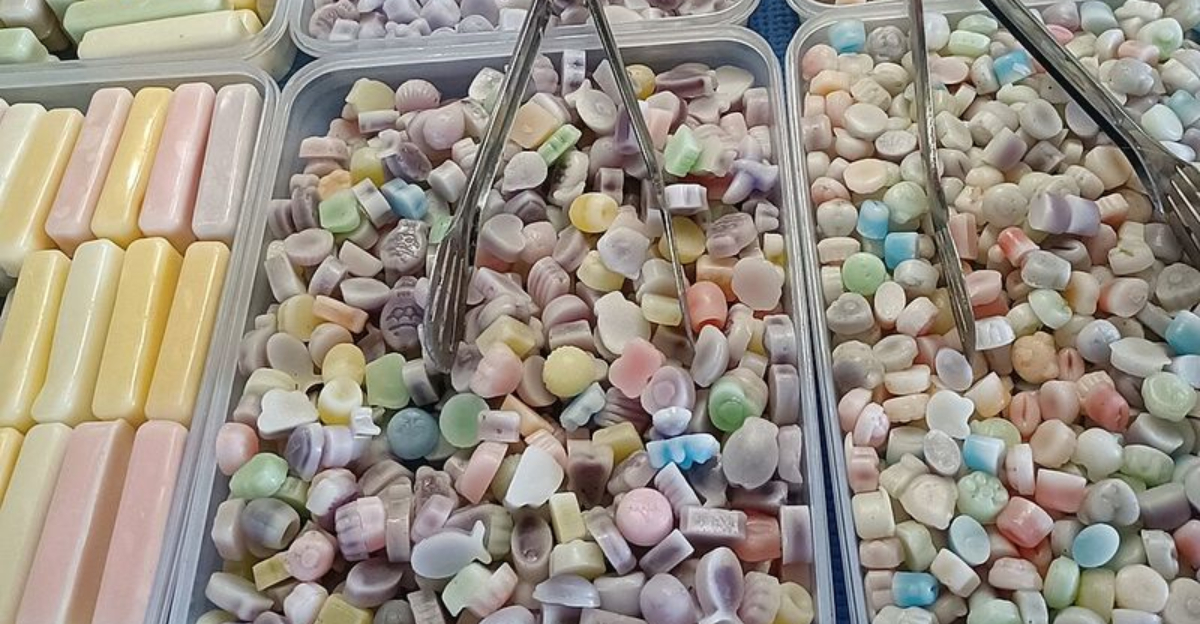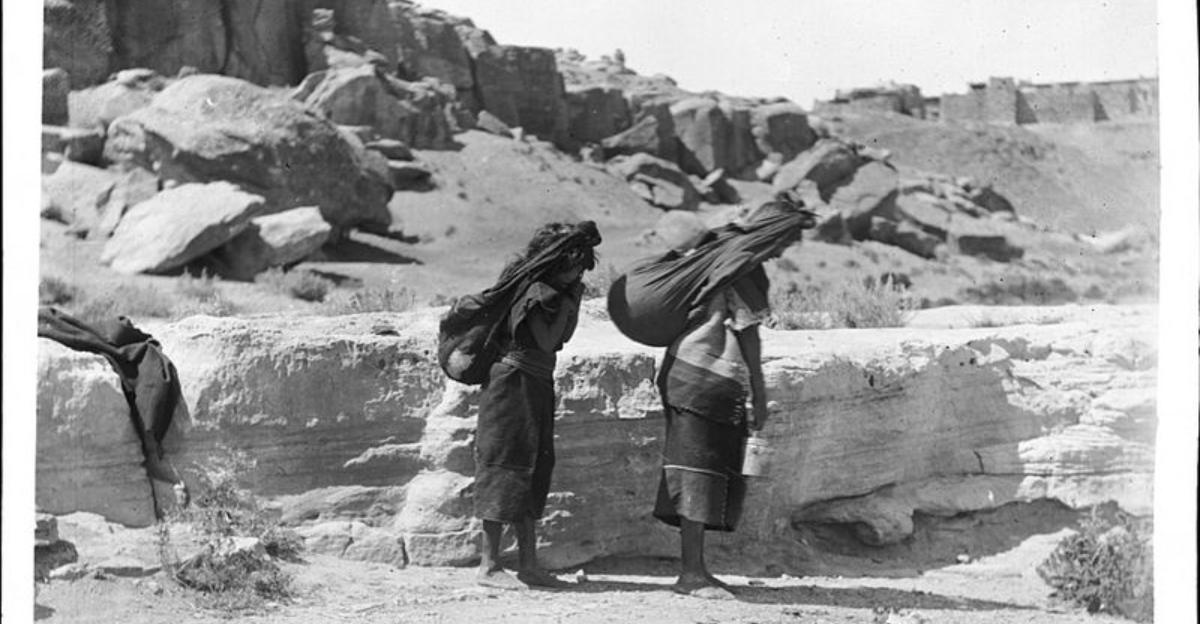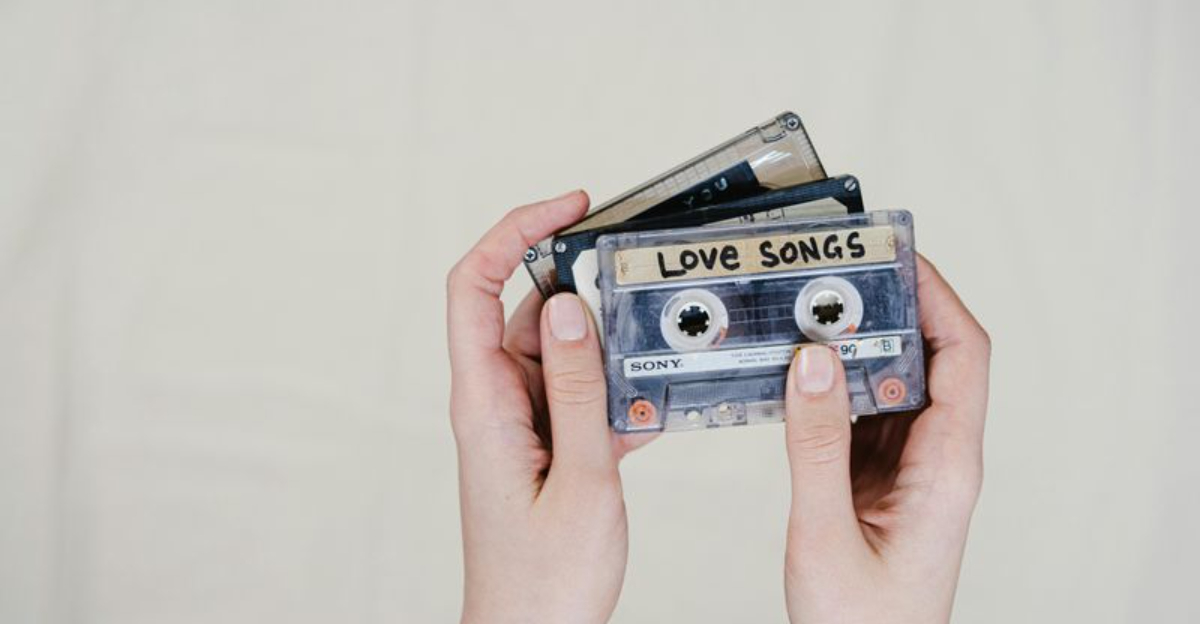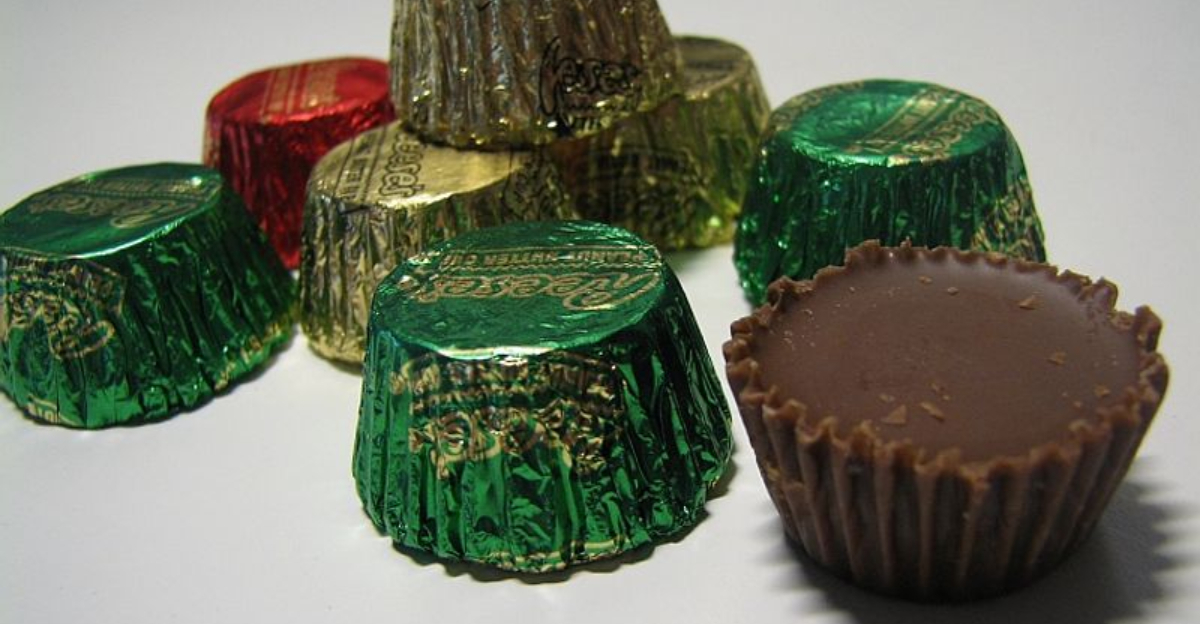20 Curious Vintage Photos That Show Us The Daily Life In The Past
Old photographs hold stories that textbooks sometimes miss.
They capture real people going about their everyday routines, from selling newspapers on street corners to sharing meals at county fairs. These snapshots freeze moments that remind us how much has changed and how much has stayed the same across generations.
1. Lunch Atop A Skyscraper
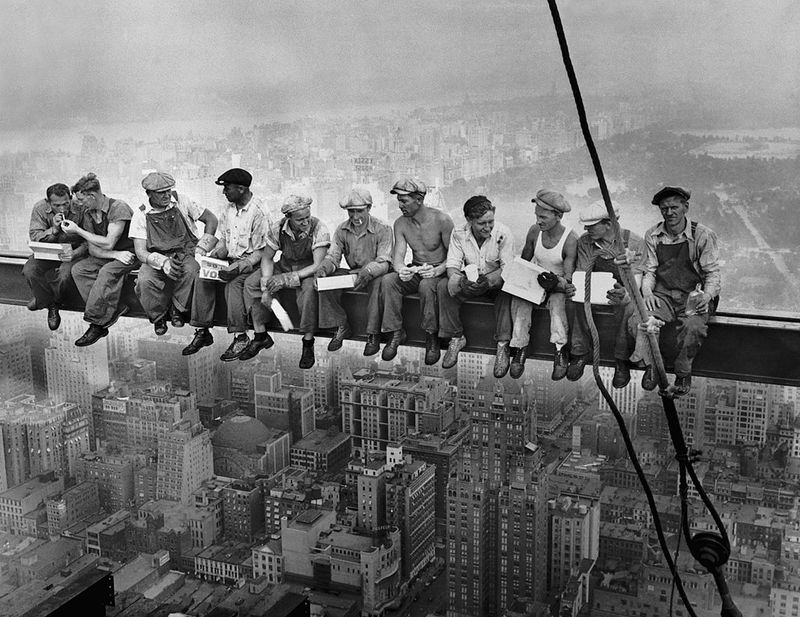
Construction workers perched 260 meters above Manhattan, eating sandwiches like they were sitting at a picnic table. No harnesses, no nets, just nerves of steel and a whole lot of trust in that beam.
This iconic image became a symbol of American grit during tough economic times. Though it looks casual, some historians believe it was a publicity stunt for Rockefeller Center. Either way, it captures a fearless chapter of city building that makes modern safety rules look like superhero armor.
2. Migrant Mother
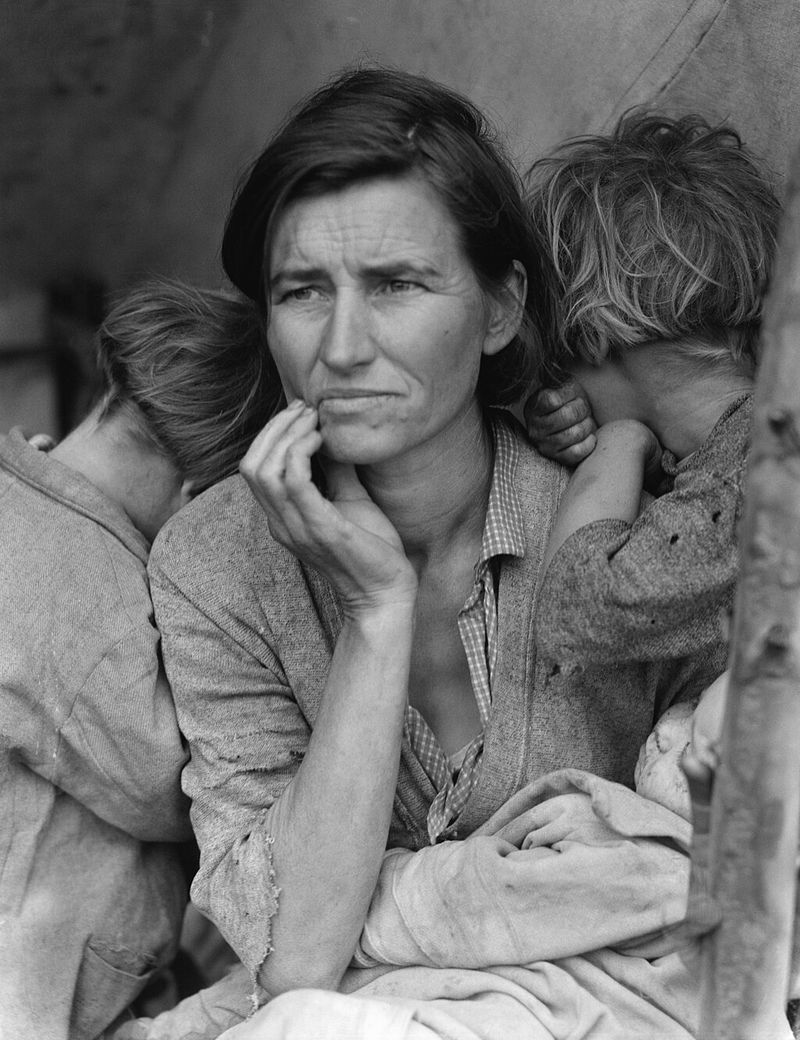
Dorothea Lange’s lens caught a stew of emotions simmering on one mother’s face – worry, fatigue, and quiet strength. Florence Owens Thompson, a pea picker, had no idea her photo would become the Depression’s most haunting dish of truth.
Her gaze still speaks louder than a thousand lectures, seasoned with sorrow and grit. That snapshot stirred compassion nationwide, feeding empathy where numbers once starved it. Even if she wished the camera had passed her by, her image remains humanity’s bittersweet recipe for resilience.
3. Country Store On A Dirt Road
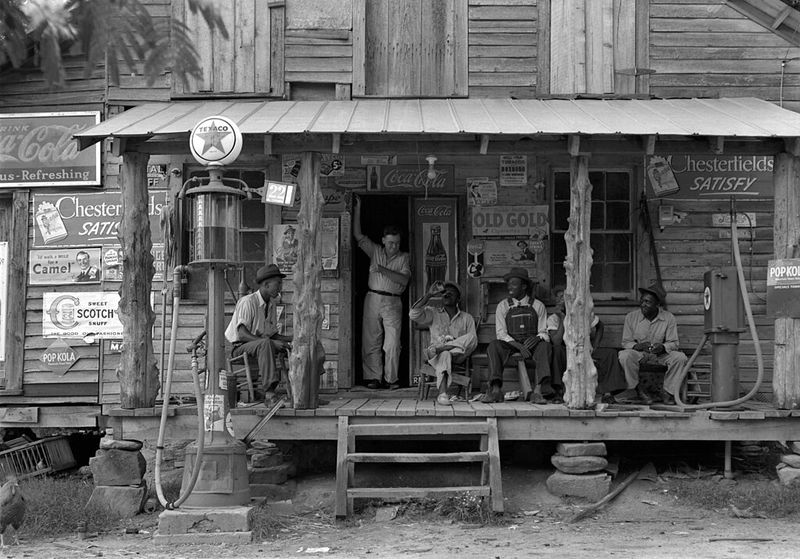
Sundays meant gathering at the general store, where folks swapped stories and bought supplies on dusty roads. Gordonton’s humble shop was a social hub long before malls or drive-throughs existed.
Dorothea Lange documented these rural scenes to show how communities stayed connected despite isolation. The dirt road, simple building, and relaxed crowd paint a picture of slower, simpler rhythms. Life revolved around neighbors, not screens.
4. Homesteader And Children Eating Barbecue
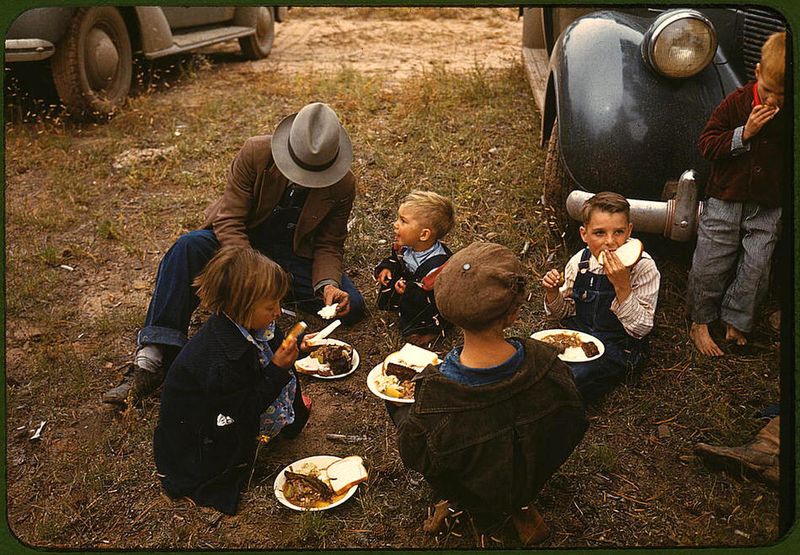
A father and his kids dug into barbecue at the New Mexico Fair, their faces lit with simple joy. Pie Town was a tiny desert settlement where families worked hard and celebrated harder.
Russell Lee photographed everyday moments like these to show American resilience during hard times. Sharing food at a fair wasn’t just about eating. It was about community, tradition, and finding reasons to smile when money was tight.
5. Getting Ready To Serve Barbecue
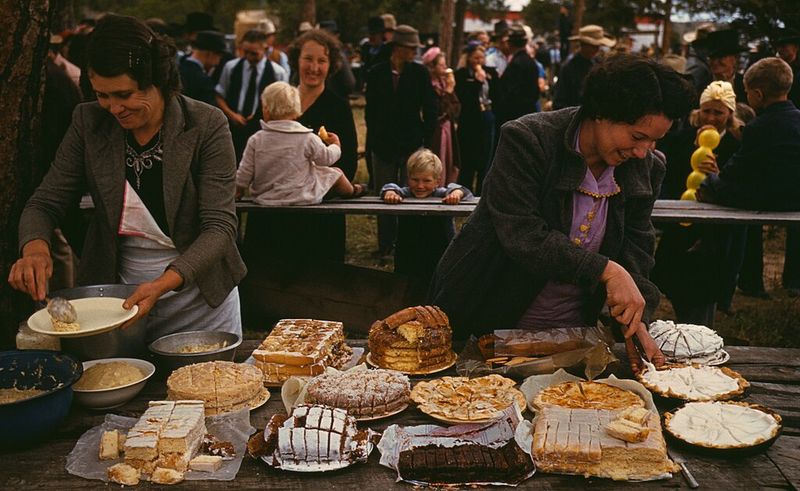
Every feast needs its flavor heroes, sleeves rolled and spirits high. In Pie Town, cooking wasn’t business – it was a bond baked under the desert sun. Russell Lee’s photo sizzles with teamwork, flour dust, and laughter mixing like ingredients in a shared recipe.
Meals meant connection, not commerce, where each neighbor stirred a little love into the pot. Before catering vans and hashtags, folks cooked side by side, proving hospitality isn’t served – it’s shared, seasoned, and proudly homegrown.
6. Newsboys
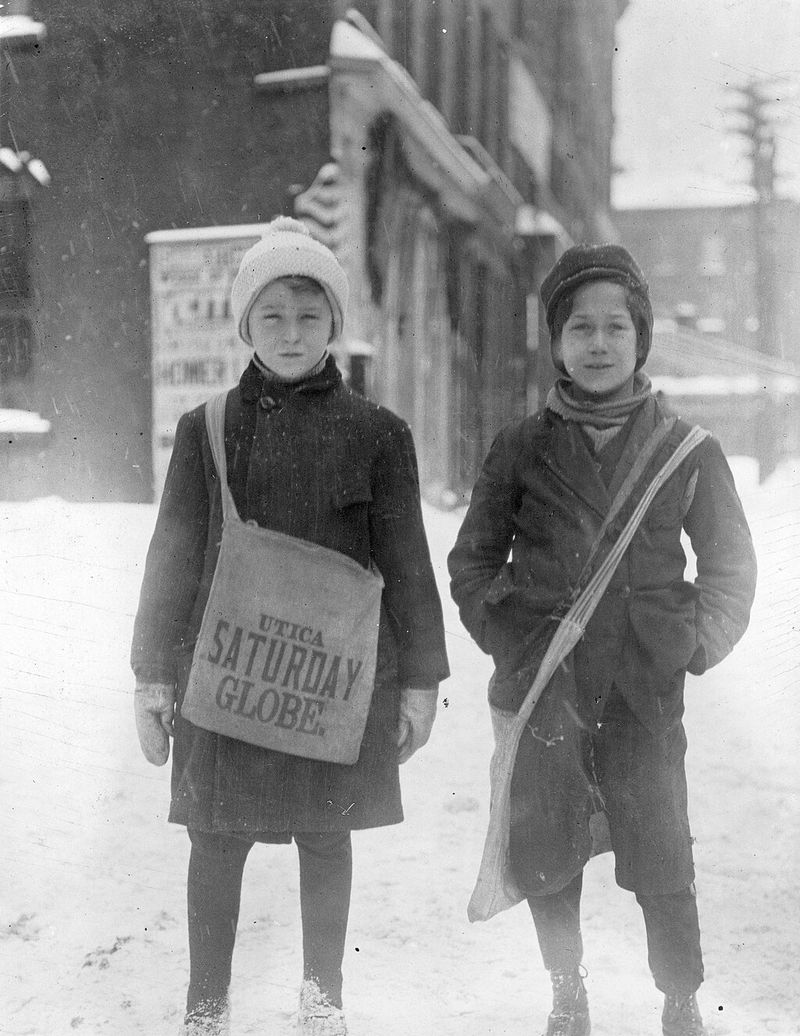
Young boys hawked newspapers on street corners, their voices rising above city noise to sell the latest headlines. Lewis Hine documented child labor to expose harsh realities most adults ignored.
These kids worked long hours for pennies, missing school and childhood play. Hine’s photos helped spark reforms that eventually led to child labor laws. Their serious faces remind us that childhood wasn’t always protected the way it is today.
7. Newsboy Little F*ttie
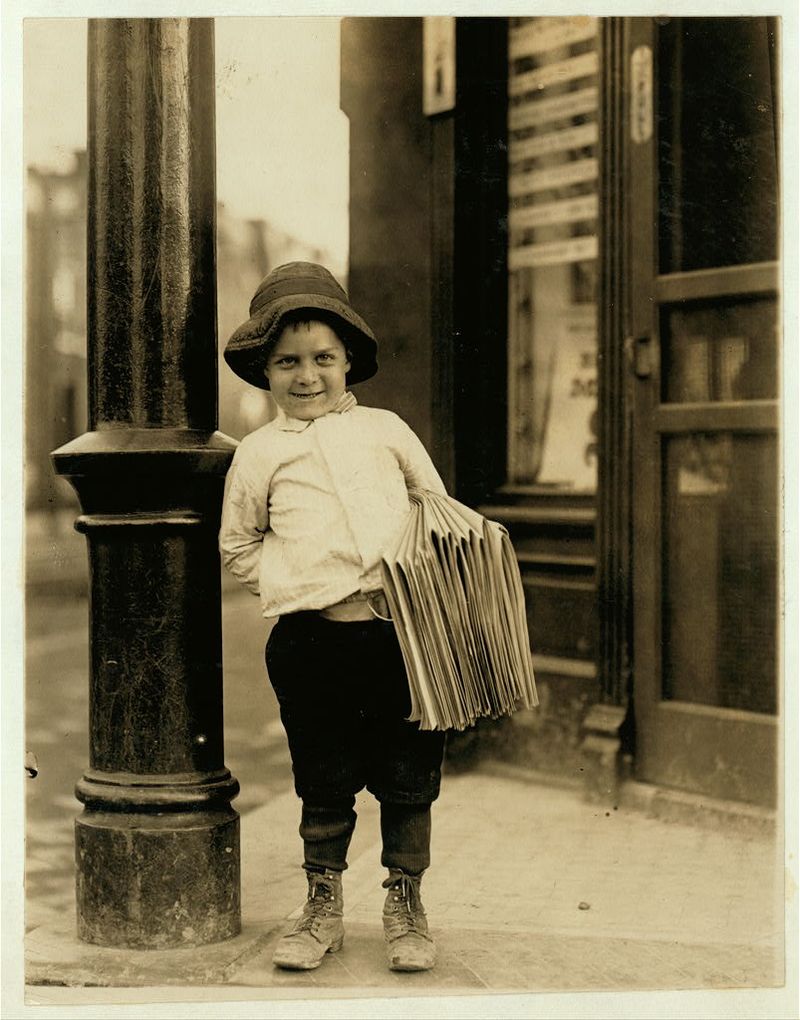
Lewis Hine gave this young vendor a name that stuck: Little F*ttie. His round face and serious eyes told the story of countless children working instead of learning.
One boy, one camera, one moment that helped change labor laws. Hine believed photos could stir consciences better than statistics. This kid’s image became part of a movement demanding that children belong in classrooms, not on cold street corners hustling for coins.
8. Children Playing In The Street
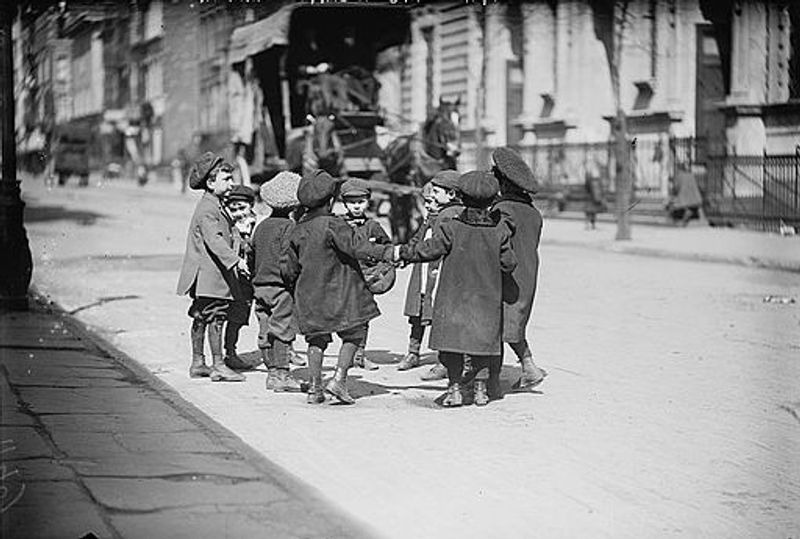
Long before swing sets and jungle gyms, city kids cooked up fun right on the pavement. Cobblestones turned into baseball diamonds, stoops into castles, and honking cars into background music.
That 1909 snapshot crackles with laughter, grit, and the sweet scent of street dust after rain. No helmets, no refs, just raw imagination and quick feet.
Street play seasoned kids with toughness, creativity, and neighborly flavor – proof that the best playgrounds don’t need fences, just heart and hustle.
9. Two Women Telephone Operators
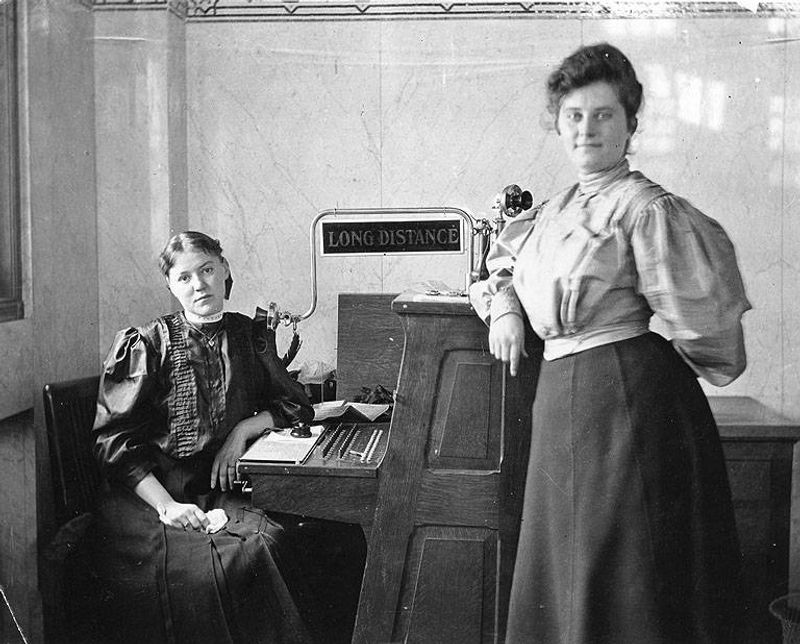
Switchboard operators connected every call by hand, plugging cables into the right slots faster than you can say “Can you hear me now?” Women dominated this job because employers believed their voices sounded friendlier and their fingers moved quicker.
Working at King Street Station in 1907 meant memorizing hundreds of connections and staying polite no matter how grumpy the caller. This role gave many women their first taste of professional work outside the home.
10. Main Reading Room
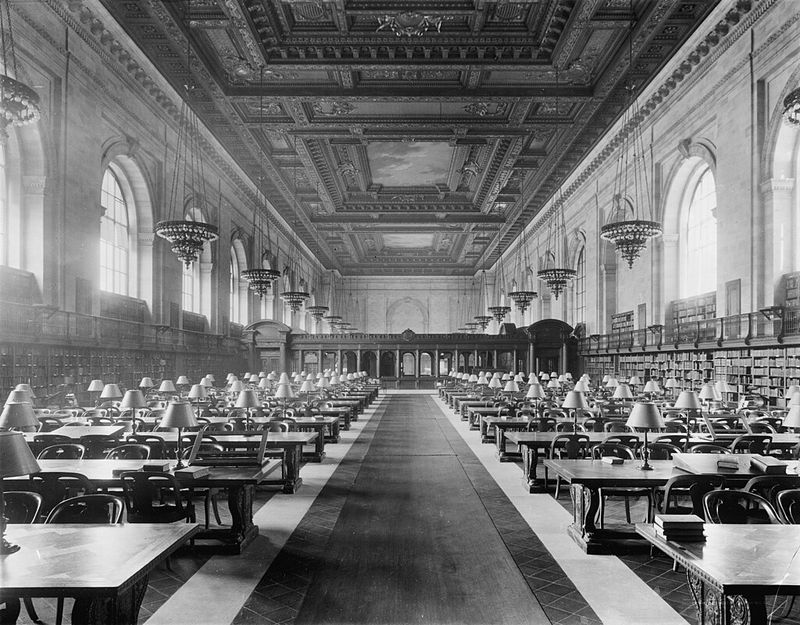
Silence reigned in the Rose Main Reading Room, where rows of readers bent over books under glowing lamps. This cathedral of knowledge offered free access to information long before Google existed.
The New York Public Library became a refuge for immigrants, students, and dreamers seeking answers. Marble columns and painted ceilings made learning feel sacred. If you needed to know something, you came here, found the right book, and did the work yourself.
11. Interior Of A Drugstore With Soda Fountain
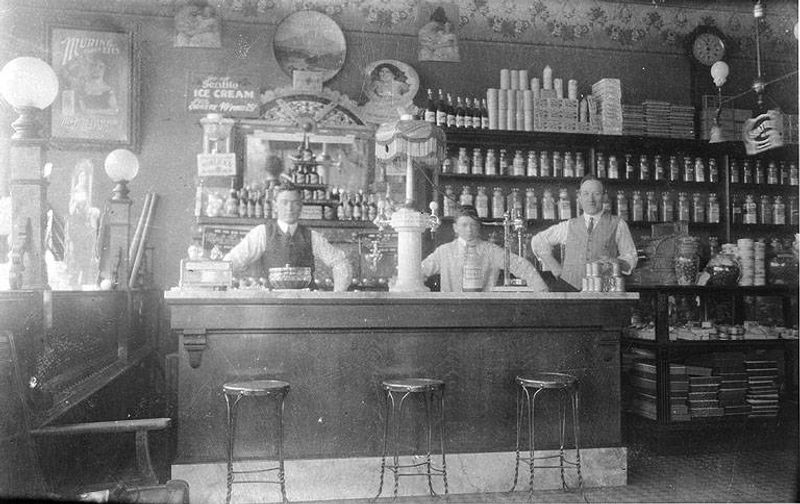
Drugstores weren’t just for medicine. They were social hubs where you could grab an ice cream soda, catch up on gossip, and pick up aspirin all in one stop.
Counters lined with stools invited customers to linger over fizzy drinks mixed by hand. A delivery boy stood ready to rush prescriptions across town. This combo of pharmacy and soda shop defined small-town America for decades, blending health care with a little sweetness.
12. Soda Fountain And Booths, Earnshaw Drug Co.
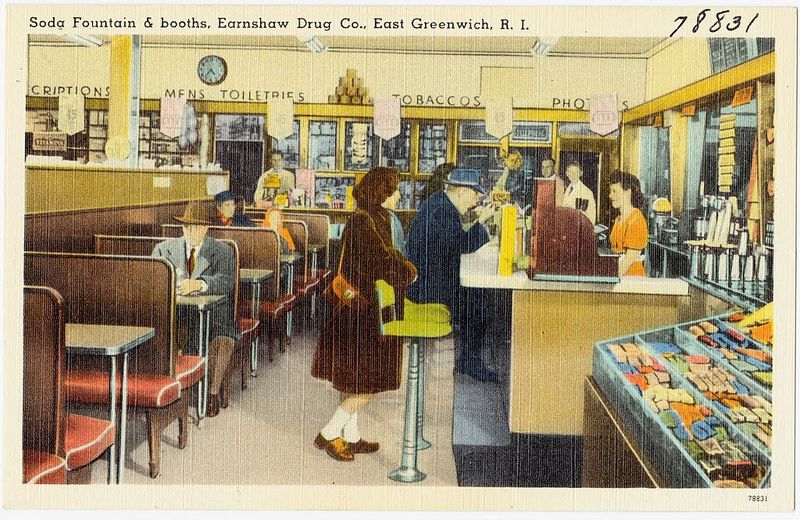
Booths gleamed, stools spun, and vanilla syrup perfumed the air like a fresh waffle cone. Earnshaw Drug Co. turned after-school hours into sweet rush hour.
Teenagers crowded the counter for frosty shakes, sizzling burgers, and shy smiles shared over sundaes. Jukebox tunes bubbled like fountain fizz while laughter clinked with spoons.
Chrome sparkle met cherry-on-top joy, and my inner chef stamps it approved. Chains came later; nostalgia lingers, sugary and bright, like whipped cream kissing lips after the last sip.
13. Supermarket Interior
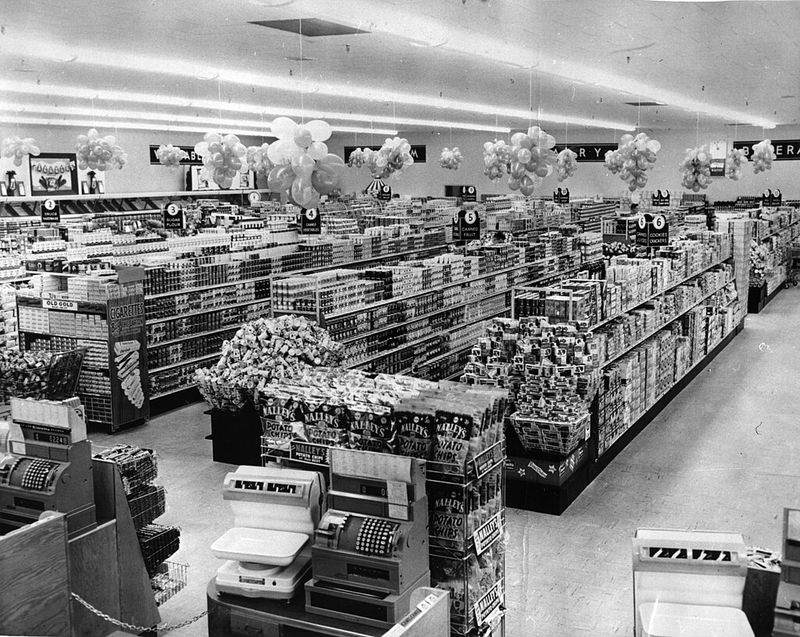
Shiny aisles stretched out like a food lover’s dream, stocked with canned goods and boxed cereals in bright packaging. The 1955 supermarket was a temple to convenience and choice.
Shoppers pushed metal carts past shelves that seemed endless compared to old general stores. Self-service replaced counter clerks, and refrigeration meant fresh milk anytime. This shift changed how families ate, shopped, and thought about food. Grabbing dinner became faster, easier, and a whole lot more colorful.
14. Grocery Store
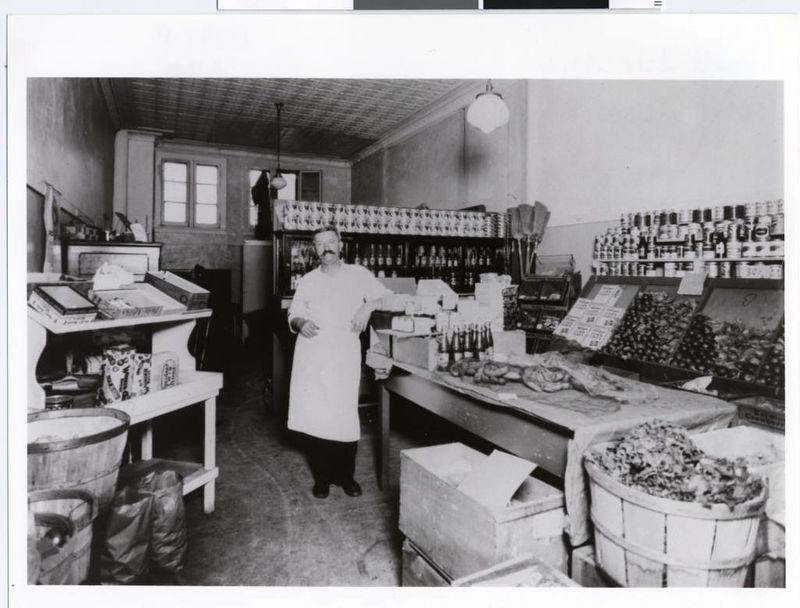
Arnold Genthe captured a time when grocery shopping meant asking the shopkeeper to fetch items from behind the counter. No grabbing products yourself; everything was handed over with a personal touch.
Barrels of pickles, sacks of flour, and glass jars lined the shelves in organized chaos. Shopping was slower, more social, and built on trust between customer and merchant. This pre-1930 scene shows commerce as conversation, not just transaction.
15. Passengers Boarding A Streetcar
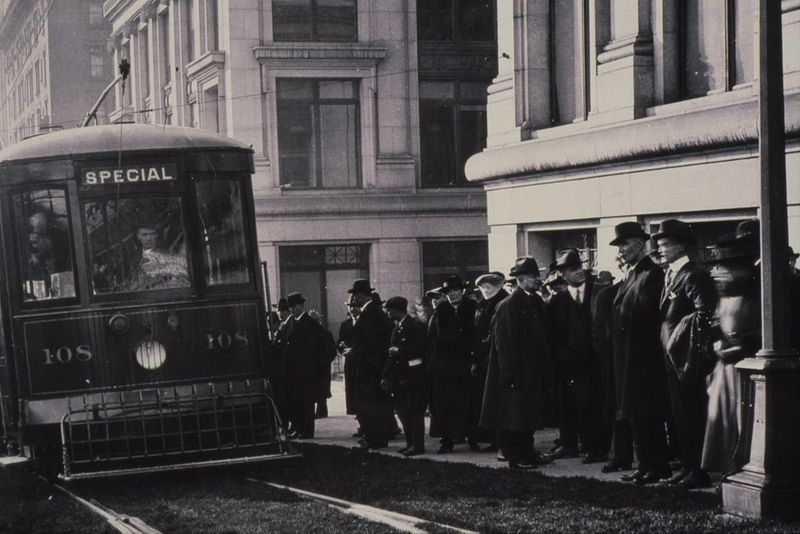
Streetcars once clanged through Seattle, filling the air with sparks, chatter, and that faint whiff of metal on rain-soaked rails. Workers, shoppers, and students piled in, trusting the conductor to steer their day right. Public transit stitched neighborhoods together before cars crowded every curb.
That 1920s scene captured more than motion – it showed connection. Strangers brushed shoulders, traded nods, and watched the city glide past open windows. Simple, efficient, and flavored with community, it made travel feel downright human.
16. Barber Shop Interior
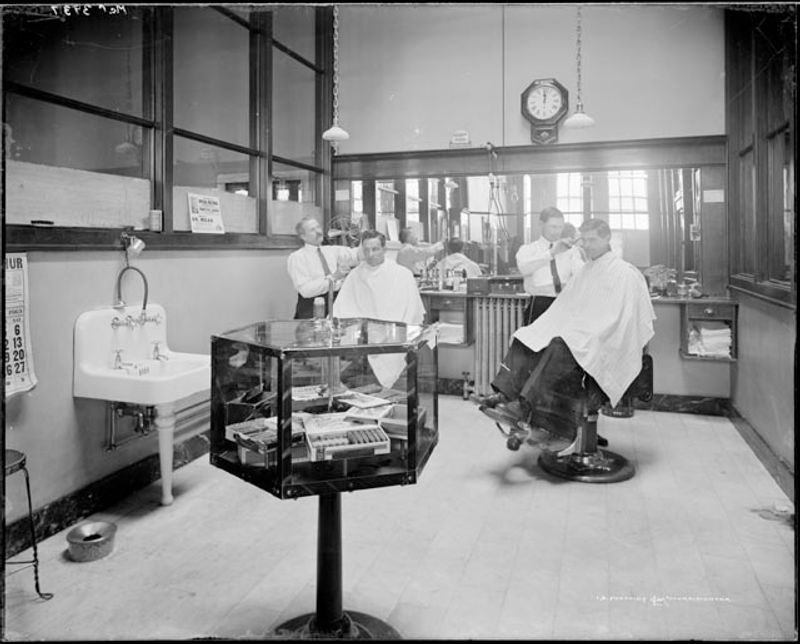
Mirrors lined the walls, leather chairs swiveled, and the scent of shaving cream filled the air. Barber shops were male sanctuaries where haircuts came with conversation and community.
Customers waited their turn, reading newspapers or swapping stories. A spittoon sat in the corner, reminding us that some old habits are best left in the past. This Denver shop captured the ritual of grooming as social event, not just personal maintenance.
17. East Street Market
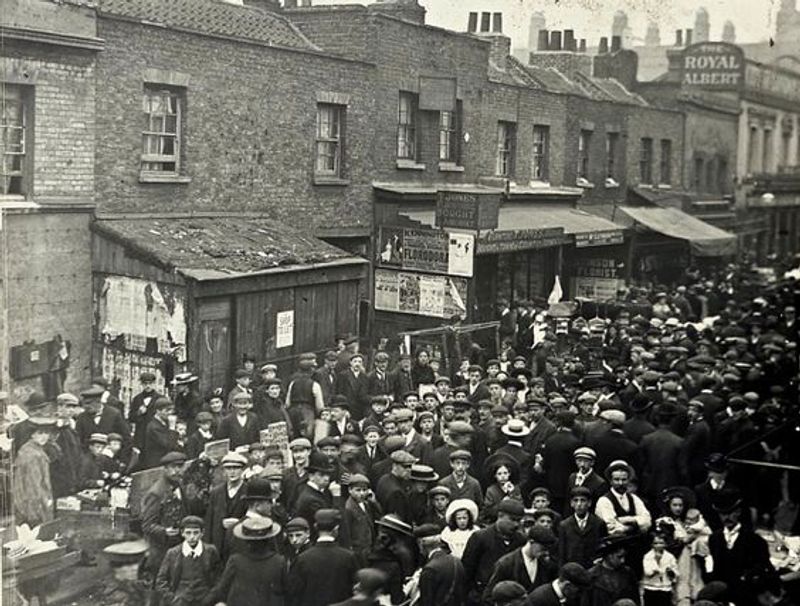
Voices rose like steam from a kettle as vendors hollered prices and shoppers bargained over carrots and cabbages. East Street Market pulsed with life, each stall a stage, each seller a performer.
Working-class Londoners counted on this daily dance for fresh food and fair deals. No supermarkets, no cold storage, just rhythm and routine. That 1910 bustle smelled of earth, bread, and hustle. Buying food wasn’t about convenience, it was about connection – commerce cooked up with charm and chatter.
18. St. John’s Market
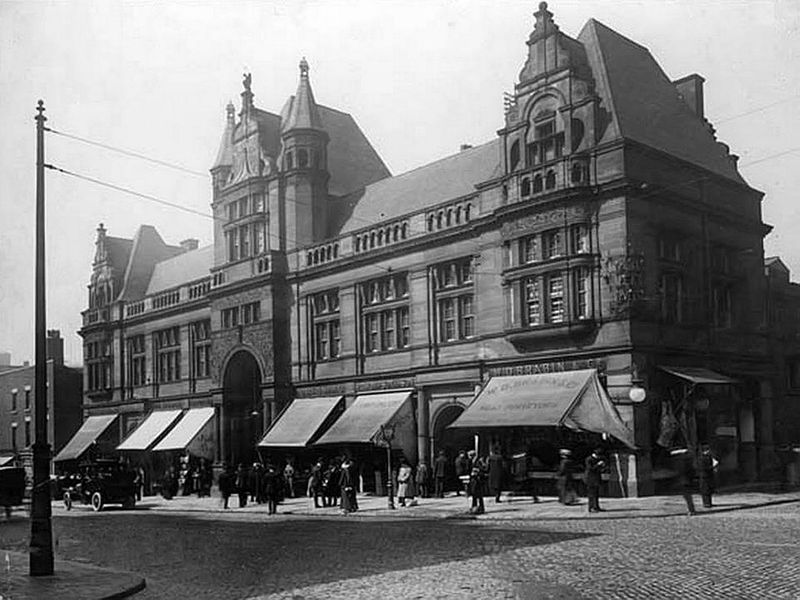
Under one grand roof, Liverpool’s St. John’s Market housed dozens of vendors selling everything from fish to fabric. Indoor markets protected shoppers from rain while keeping the lively market atmosphere alive.
Edwardian-era shoppers navigated narrow aisles, inspecting goods and chatting with familiar vendors. This wasn’t impersonal retail; it was relationship-based commerce where trust and reputation mattered. The market’s architecture turned shopping into an experience worth repeating, rain or shine.
19. Street Scene
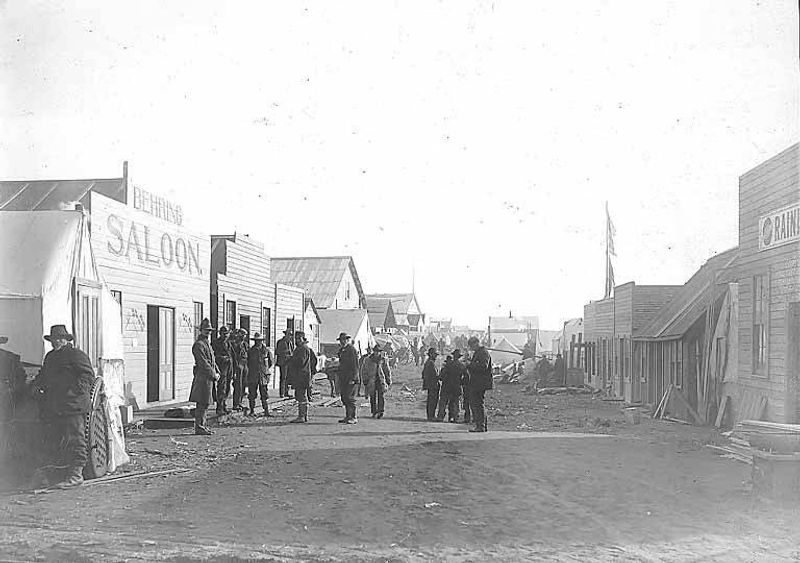
Nome’s main street looked like a Wild West movie set, complete with saloon signs and wooden storefronts. This Alaskan frontier town sprang up during the gold rush, attracting fortune seekers and adventurers.
Life on the edge of civilization meant mud streets, harsh winters, and a community built on grit. The Behring Saloon and other establishments offered warmth, whiskey, and stories after long days panning for gold. Though rough around the edges, Nome represented American ambition at its most daring.
20. Important To Service Station Attendants
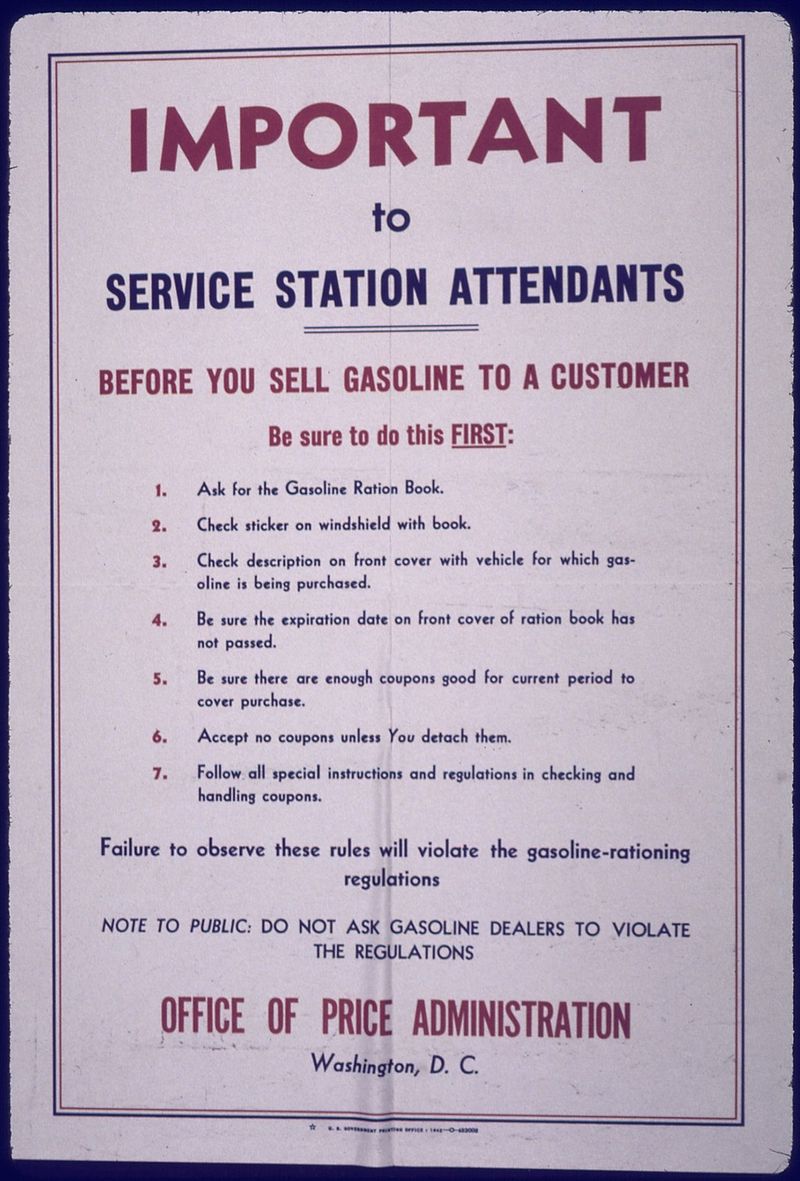
Gas station attendants became frontline soldiers in the war effort, managing fuel rationing with precision and patriotism. This National Archives poster reminded them that every gallon mattered for victory.
During WWII, rationing changed daily life dramatically. Filling up wasn’t automatic; it required coupons, limits, and careful record-keeping. Attendants pumped gas, checked rations, and helped customers understand sacrifices necessary for the troops overseas. Everyday work became an act of service to the nation.


